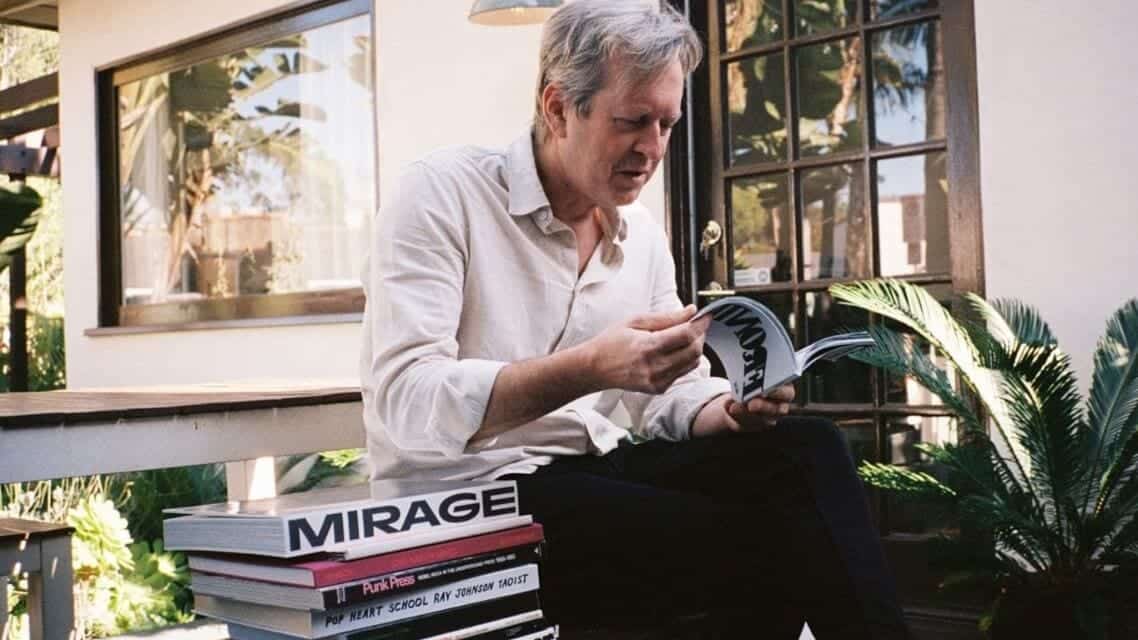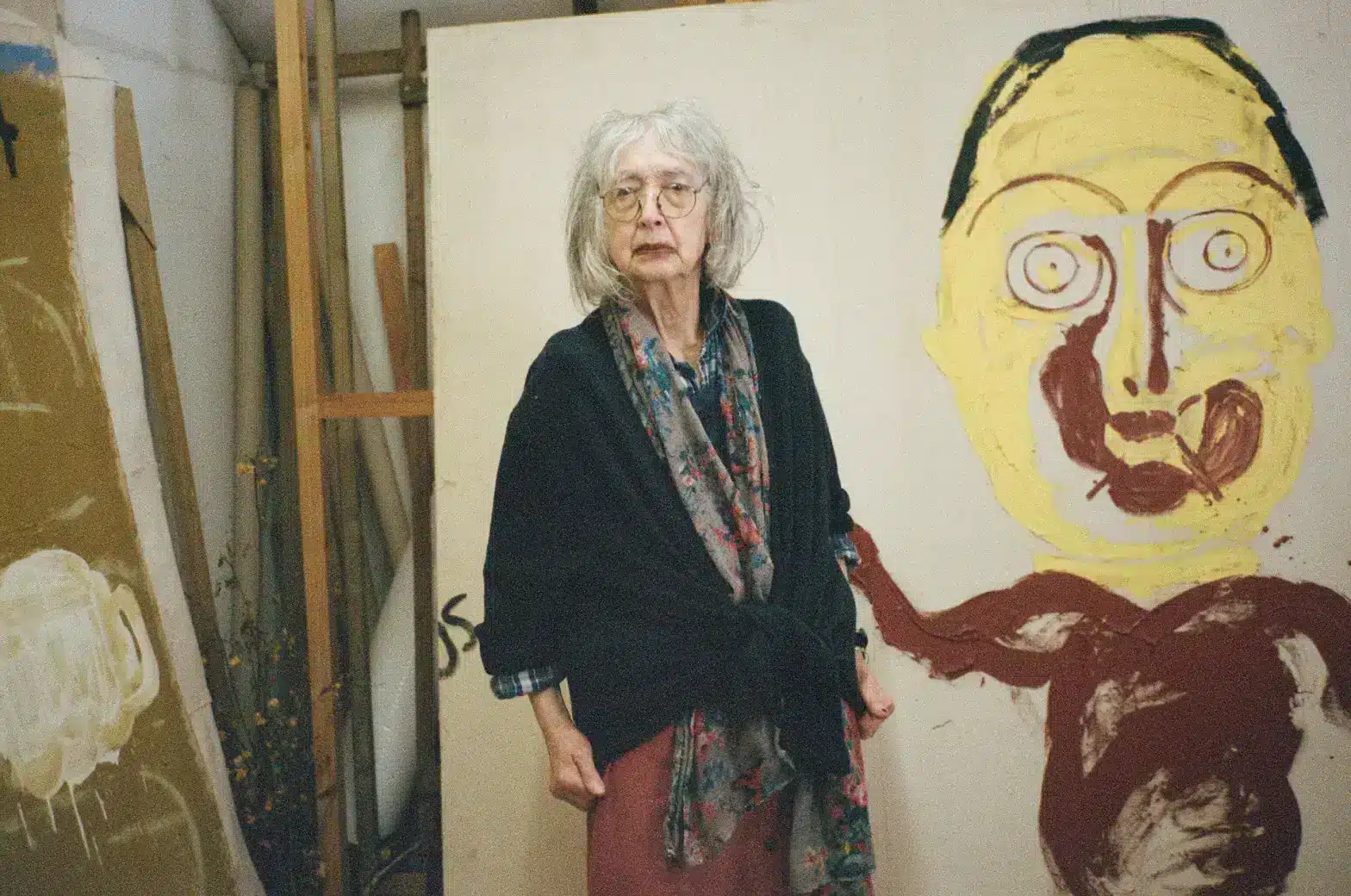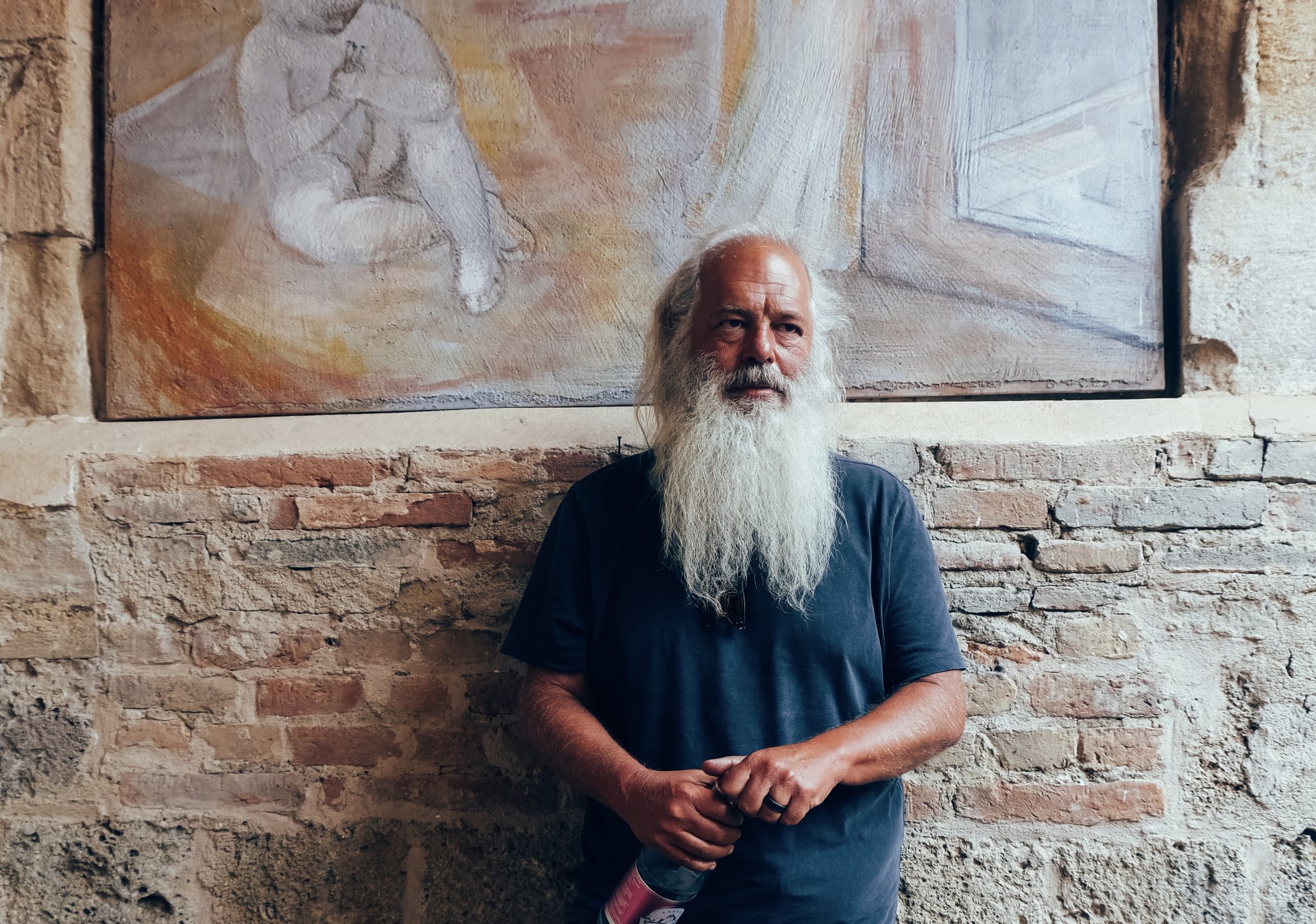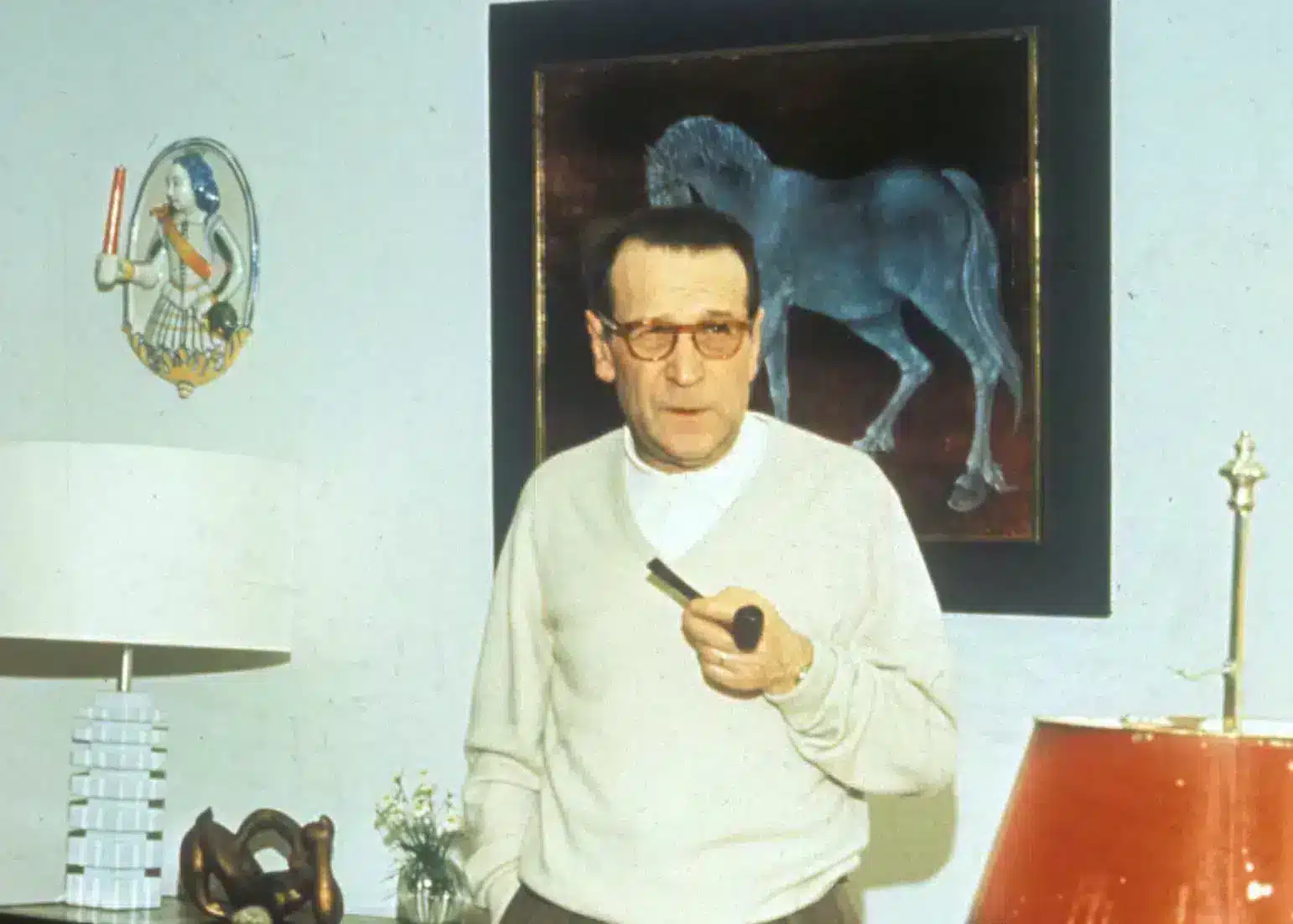
There’s scope to the way Doug Aitken talks. The multidisciplinary has always seen the world beyond himself, and more importantly, the potential in it. His artwork, whether it be sculpture, architecture, or film is similarly infused with an acute awareness of an ever-evolving culture. In this exclusive conversation, Director and Founder of Albion Jeune, Lucca Hue-Williams, sat down with the artist for an in-depth conversation on the American Dream, technology versus culture, and how he utilises the passage of time in his work.
How has your upbringing in Los Angeles shaped your artistic practice?
When you grow up in L.A., you grow up in this kind of kaleidoscope, a collage of information. One of the things about the city is that its greatest export has always been images. It’s a particle accelerator for music, film, and images that are created here and pushed out and broadcasted into the world. It’s a very strange and surreal purpose for a city.
Do you believe that the role of the artist is changing, specifically with regards to the intersection of art, science, and the environment?
There is the art that was: the known mediums, the traditions, an exhibition in a white room with works on a wall. What we are finding is a crossroads right now, and within that are new frontiers. These are the ideas that prove art can be an activator for a journey that empowers a sense of discovery. Much of the art we work on in my studio is continuously performing. That is a different approach to what we have found in the past traditionally, where artists produce something that is commodifiable, capitalist and contained. I would like to see the definition of art expand. Also, I think the idea of the moving image is undergoing a renaissance. We are seeing the time codes of the past—a commercial, a short film or music video, the long form feature film, all these formats with a certain prescribed length, becoming more fluid. Much of the multi-screen film installations I’ve been making run continuously and are not held by a time-code format. They become immersive. We are living in this moment where generations are feeling the drive to create their own language, and I think that is incredibly profound.
Are there any projects you would like to discuss to that end?
We are in the thick of a feature film, Lightscape, which is also an installation, which is also the first collaboration the Los Angeles Philharmonic and the Getty Museum have done with an artist together. I’m creating an hour-and a-half film, but there is almost no dialogue at all. It moves from person to person and place to place, in a stream of consciousness way. It maps the idea of the modern landscape and asks, “Where are we going and how do we sculpt our identity as we move forward?” Sometimes it feels like we are pulling this strange, unwieldy creation up a mountain with a tiny rope, chipping away, filming every moment relentlessly. I think what is coming out of it is an attempt to create a different kind of language. Lightscape has this very polyphonic narrative, where music and sound can replace the traditional dialogue, something that really creates this tapestry of lives and encounters with individuals. With Lightscape we are creating something that isn’t simply made to be a film. It will also become a six-screen immersive installation, this turbine particle accelerator-like installation. We are in the midst of the explosion of the narrative, it’s taking on new forms that speak to us more specifically to our lives right now.
You have spoken of a disinterest in ‘illustrating or making a statement about a specific place’, yet many of your works, such as Blow Debris, seem to reference distinctly American archetypes of land and social structures.
I used to try to avoid making artworks that dealt with America. Almost everything I made was created somewhere else. It was in India or Africa, it might be in a volcanic island or mines in Namibia. With Lightscape, I found that the narrative is universal. Art for me is very polyphonic. It doesn’t exist only in moving images. I see the world almost as if everything is being edited all the time, as if my eyes are lenses and I am cropping and zooming. One of the projects we are looking at is in Egypt in an oasis in Siwa, a remote part of the country. That situation is the diametric opposite to something like a film. Film is essentially unmaterial, and in Egypt we are looking at creating a land art piece by taking the saltwater of the oasis and using it to create salt crystals and to create growing and living artworks and sculptures that move with the landscape and build up over time and change shape and form.
Indeed, Land Art originated in the American West in the 1960s and 70s. Has your practice been particularly influenced by this history?
My whole life I have been addicted to discovering places and seeking out things I haven’t seen before. In a lot of ways, American cinema is based on the idea of the road film. In America, it is really a kind of mythology. The land art of the 1970s—Heizer, Smithson, De Maria—artists who were looking to break outside the traditional system and who found the idea of open space or unexpected places to be this incredible nutrient and the work that came out of that is significant. However, I think we can take these ideas further, and I don’t think we need to create things that are necessarily monumental and permanent. We can look at the landscape as a living ecosystem. The soil, the sun, the rain, all of this can create something vital. It seems like you are quite interested in exploring the concept of time in your work. Time is the one inescapable thing, it is the architecture that we live our lives in. That is one of the most fascinating things about film and moving images. They offer this rare opportunity to sculpt time. To paraphrase Tarkovsky, you are “sculpting time”, shifting it through a speeding lens or compressing things down while editing and creating reflections. An investigation into time has always been in the moving image work I do but it has also seeped into everything else from the performances and happenings. There is always this awareness of temporality. We have this little time on the planet, how do we use it? How do we create enriching experiences so we can share them with others? In some ways that is the value of culture.
Howl is a film installation you made that challenges the viewer to reflect on how humans navigate both ideological and physical landscapes from an environmental standpoint. Could you elaborate on your ecological views for the future of the American West at large?
I am speaking to you from Venice Beach, one block away from the Pacific Ocean. Everything stops here in a sense. I think this subconscious quality of the West in America is this idea that we have this continuous movement that pushes and pushes, and eventually you get to this point where things are supposedly looser, or there is more room for expression and individuality as you reach the end of the continent. Whether this is entirely true or made up is relative. [There’s this idea] of the West as this frontier space, where Steve Jobs and Steve Wozniak can go into their parents’ garage and create a computer; where up the street from where we’re speaking is Johnny Rotten living in the corner house; where performance artist Chris Burden was crucified onto a Volkswagen Beetle in the early 1970s at the intersection over here. Down the street is where Robert Irwin was making light and space installations and exploring the idea of the de-material. In a sense, the West for me is an idea that feels so fluid, where information is exchanged at the speed of light.
There is a commercial quality to your lightboxes and text-based sculptures that seems to reference American billboards and signage. How has American consumerism influenced your work? Is there a subtle criticism behind these semiotic works such as Hot Mess (2023)?
I think the lightbox sculptures derive their structure from commercial signage and this is something that we see in every country and every culture. The roadside signage, the language of images bombarding us, seeking out desperately for us to buy something or to spend money—“Bankruptcy? Divorce? Been in an accident lately? Need a lawyer? Call us”—and that is part of the commercial landscape around us all the time. At one point I remember thinking, I was on a long road trip in the middle of nowhere and I was passing one billboard after another, after another, after another. It was as if you slowed down film and you saw each of the 24 frames per second and they had become billboards, images on the roads, one after another, and your vehicle was a camera and the images were frames. And I started thinking to myself, maybe there is a way to reclaim this forest of signs. Maybe there is a way I can take back this landscape of bombardment and instead make signs that ask questions and provoke you to think, artworks that you can fall into as opposed to signage that attacks you.
Do you believe in the mythological concept of the American Dream?
I don’t know if there is a collective dream. I don’t think a collective dream of America exists. I think it is plural. Everyone has a different collage of what reality is. Culture is at its best when untethered from capitalism, when functioning as a space of open sky that allows us to hallucinate and dream.
What do you believe is the fundamental thread that ties all your work together?
The only connecting thread is that I am one little person trying to make this stuff. As you create things, this tapestry becomes broader. You live your life, you put down marks and traces, you have conversations with people, but all these things keep feeding off each other. They become part of something larger. I’m thinking about how all of these things intersect, in terms of creativity, that is the world I would like to live in—somewhere there are no silos or boundaries.
You often speak of information saturation in contemporary culture. Are you interested in bringing to light the invisible infrastructures that connect the world? How can technology be used in the service of culture?
I have noticed that when we see cold technology, it is very difficult to connect or relate to it. But when we see stories that use technology and explore the human dynamic with it, that is something that people are hungry for. We want to understand more and want to have a dialogue about where we are going and not just be pushed into the next technological chapter. In some ways we are in a very vulnerable situation as a society because we don’t really have a voice in technology. We don’t really have a vote on where we are moving towards. Instead, we are bystanders. There are new updates or upgrades that we are just expected to use, but we can’t choose. Technology, in some ways, has always been there since the harnessing of fire in a nomadic culture, but at this point it is a very surreal space that we are occupying. For me, I don’t necessarily want to walk into a gallery and see another painting of something I have seen before in the past. I am much more interested in seeing men and women who are working in culture taking these motifs and challenging them so we can all reflect and have a more dynamic dialogue in the future.
Do you personally feel a nostalgia for a time before the ubiquity of the virtual world we live in?
Well, look at A Rabbit’s Foot. I love these films. There’s Steve McQueen on a motorcycle on the cover [of issue 6], and here’s Tarkovsky who we spoke about a minute ago. I think culture has a root system. Sometimes I find I am mapping the world around me through film. Over the pandemic, I remember missing New York City so much, and I couldn’t go there. So, I spent this period watching every single film that was ever shot in New York City from 1970 to 1990 in chronological order. Yes, some were super awful, and I scrubbed a lot of them, but it was so interesting to see the representation of a city, as a location that was continuously changing. Sometimes film has other values beyond what you think. It is not just, “Was this good or bad?” but in a macro view, film is creating crystals out of different moments in time, and this crystallisation can be incredibly important for us now.
















